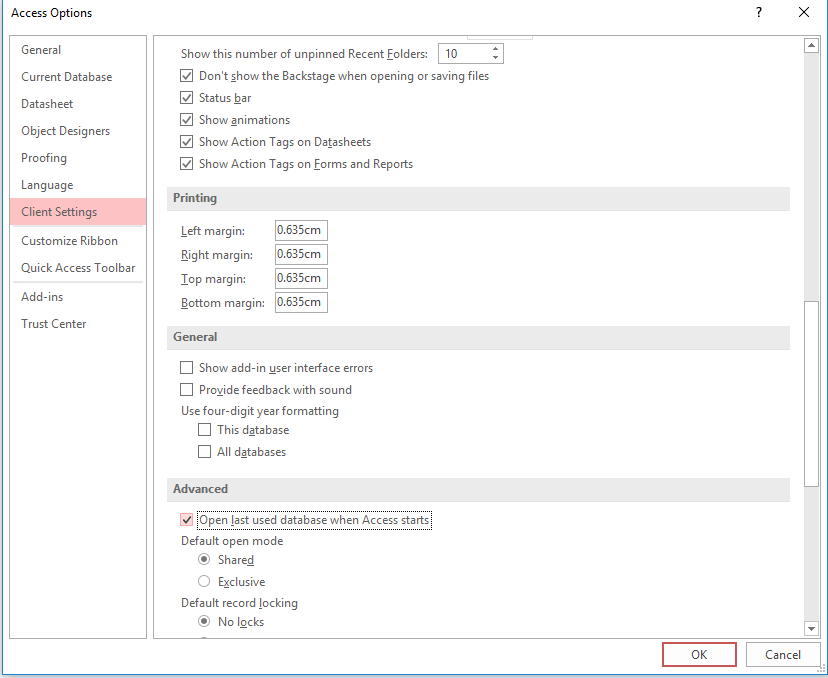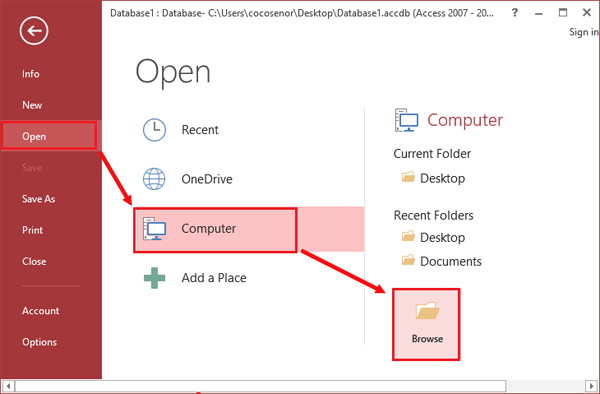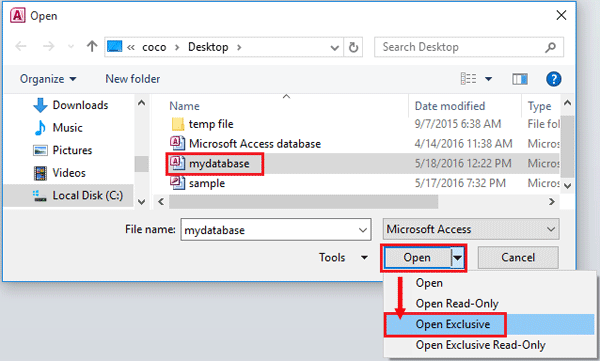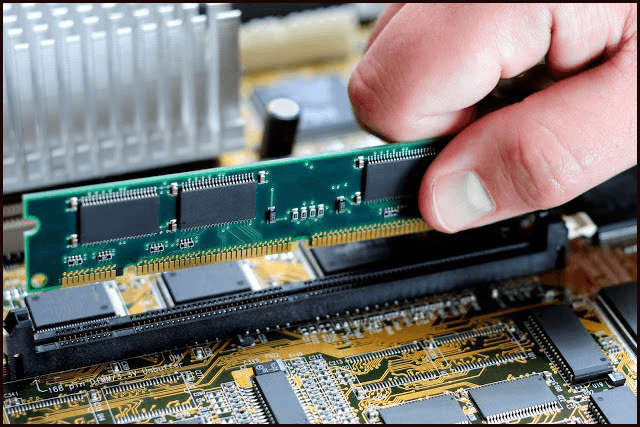When dealing with Access databases users often encounter the annoying issue of slow database performance, which can hamper the overall work & user satisfaction. Well, in this blog, I will explore 12 expert tips and effective strategies on how to speed up Access database and ensure optimal functionality.
So, let’s get started…
Free MS Access Database Repair Tool
Repair corrupt MDB and ACCDB database files and recover deleted database tables, queries, indexes and records easily. Try Now!
By clicking the button above and installing Stellar Repair for Access (14.8 MB), I acknowledge that I have read and agree to the End User License Agreement and Privacy Policy of this site.
Why Is Microsoft Access So Slow?
The main causes of the slow working Access database are due to:
- The large size of Access Database.
- If your database file is corrupted, then it will refuse to open or throw several error messages which will have a great impact on the performance.
- RAM (Random Access Memory) insufficiency
- Lack of disk drive space (HDD or SSD)
- Missing indexes or bad index design
- Incorrectly designed database schema
- Old/fragmented system hard drive.
- Simultaneous execution of several background programs.
- Failing of Windows or Driver update
- Malware /viruses attack the database
Hence, to ensure the smooth functioning of Access & avoid any database problems, you must avoid corruption and maintain the Access database regularly. In the next section, you will learn how to speed up MS Access database with 12 pro tips.
How to Speed Up Access Database Performance?
Here are the following guidelines that will help you to boost up Access database speed. These methods are applicable for both case whether your database is stored on a PC or network.
Quick Tips:
- Turn Off The Animations Given For Better User Interface
- Split The Database
- Turn Off Unnecessary Action Tags
- Improve The Performance For Split Databases
- Make Adjustment In The Virtual Memory Settings
- Compacting Database Regularly
- Open Access Database In the Exclusive Mode
- Disable or Delete Subdatasheets
- Adjust The Network Refresh And Update Settings
- Keep Less Controls- Speed Up Access Database
- Add Extra RAM On Your PC
- Troubleshoot Access Database Corruption
Tip 1: Turn Off The Animations Given For Better User Interface
The user interface of MS Access includes fluid and beautiful animations to make use of hardware acceleration throughout the user experience.
Though, these attractive animations make your MS Access interface easy to get used. But on the other hand, it will make the MS Access database performance slow.
Well, you have the option to turn off the animations feature to speed up Access database.
- Tap to File tab from the menu bar and then on the This will open the Access Options dialog box.
- From the opened left pane tap to the Client Settings option.
- After that, from the right pane get into the Display option, and uncheck the checkbox present across Show animations.
Also Read: Create a New Form Using Form Wizard in Access [Tutorial]
Tip 2: Split The Database
By default, MS Access saves your data and user interface object in one place. But as per some developers, if you split these single files into two places – one with user interface object and one with data, it helps in improving the performance. User work in the front end that is consists of user interface objects that recover data as required that is linked from the back end. Splitting Access database improves the performance but it is not always the same case.
If you are the only user of your database, you can still split it, but if there are many users then tell your users to save both ends on the local system to prevent network issues.
Tip 3: Turn Off Unnecessary Action Tags
If you are not using the action tags in your database then it’s better to turn it OFF. This will ultimately, make Access database faster to perform.
- Go to the File tab from the menu bar and after that hit on the Options This will open the dialog box of Access Options.
- On the opened screen, just tap to the Client Settings from the left pane.
- Go to the right pane, under Display, and uncheck the following checkboxes:
- Show Action Tags on Datasheets
- Show Action Tags on Forms and Reports
Tip 4: Improve The Performance For Split Databases
As mentioned in the above tip, splitting the database makes things slow. In such case you can follow some simple things to enhance the performance of a linked backend:
- Use queries to reduce the data retrieved to limit the sum of data, Access retrieves from the linked table(s). Apply thins in both records and fields.
- A browsing form can be slow because it retrieves data across the network connection consequently. So while entering data set the form’s Data Entry Property to “Yes”.
- Maintain the record navigation to a minimum.
- For static data like state abbreviations, Zip codes, etc create local tables.
Tip 5: Make Adjustment In The Virtual Memory Settings
Mostly it is seen that Windows uses the default virtual memory for optimal performance. So, by making some adjustments to settings in the virtual memory you can speed up Access database over network or on PC.
Here are the different cases in which you can easily make adjustments in the setting of virtual memory.
- If you have a shortage of disk space on the drive in which virtual memory is currently being used. On the other hand, your system’s local drive has blank space.
- When your local drive is not used much and has some available space as compared to the current drive.
In such cases, you can make your Access database faster just by allotting a different drive for the virtual memory.
You have also the option to specify some fixed space on the disk drive for the virtual memory. You can only allot 1.5 times of RAM space to the virtual memory. Suppose your RAM is of 1,024 megabytes then you will specify the virtual memory space of 1,536 MB.
Also Read: 3 Ways To Merge Tables In Access Database
Tip 6: How to Speed Up Microsoft Access Database by Compacting Database Regularly?
The compacting database does not only compact the database but it also deletes unwanted objects and records, thereby reducing the size of the database files. Access built-in “Compact & Repair” utility also repairs several corruptions & re-organizes the records and updates statistics. To know how to use this utility, Click Here.
Tip 7: Open Access Database In the Exclusive Mode
Work with your Access database by opening it up in exclusive mode. As. this will prevent any third person from making the Access database simultaneously. This will ultimately boost up slow running Access database speed.
- Just start up your MS Access application, but don’t open the database contained within it. If in case the database is already open then immediately close it.
- Tap to the Open >> Computer and then hit on the Browse option.
- Now from the dialog box of Open option, choose the database file that you need to get open.
Alternatively, you can make use of the Look in list to browse for the database file.
- Hit on the arrow present on the button of Open. After then tap to the Open Exclusive option.
Tip 8: Disable or Delete Subdatasheets
By default, MS Access display sub datasheets between related tables. Unluckily, they reduce performance. View and seeing related data is absolutely a great feature and if you work a lot in Datasheet then you like to use this feature. However, there are users who do not want to see the data presented in this way. Hence, suggest users turn off this feature. Here how to disable it:
- Open table in Design View> Click Property Sheet from the Show/Hide group Design tab.
- Change SubdatasheetName property from Auto to None.
Tip 9: Adjust The Network Refresh And Update Settings
If your Access database running slow over network, try this method. Try to make adjustments in the Update retry interval (msec), ODBC refresh interval (sec), Refresh interval (sec), Number of updates retry settings if applicable.
Make use of the Number of update retries & Update retry interval settings. To specify the number of times, the MS Access tries to save up the record mainly when it gets locked by any other user.
Opt for Refresh interval and ODBC refresh interval options for time interval settings after which Access refreshes its data automatically.
Through the refreshing setting, only the data that already exists in the datasheet or form gets updated.
It doesn’t perform the following tasks:
- Reordering of the records
- Removal of the deleted records
- Removing records that no longer meet the criteria.
For all these changes you need to re-query the underlying records for form or datasheet.
How to adjust network refresh & update settings?
- Just open the database whose performance you want to boost up.
- Tap to File> Now on your screen dialog box of Access Options appears open.
- From the left pane, just make a tap on the Client Settings.
- In the opened window, go to the right pane and tap to the Advanced Here make modifications in the setting you want to change.
Also Read: How To Manage User Permissions In Access Database?
Tip 10: Keep Less Controls- Speed Up Access Database
Some users think more is better, but you should know that a simple form is typically faster than a complex one with a maximum number of controls. A form with lots of control can take a longer time to load and respond to requests. Hence, suggest users make several specific tasks instead of making one complex one.
Tip 11: Add Extra RAM On Your PC
Adding extra RAM on your PC greatly helps in the faster execution of Access database queries. Besides that, it will also help you to work with multiple Access database objects simultaneously. Furthermore, as compared to virtual memory RAM works much on the Hard Drive. By adding extra RAM, firstly you are minimizing the disk usage; secondly improving Access Database Performance.
Tip 12: Troubleshoot Access Database Corruption
As stated above, database corruption is also one of the main causes for the database to run slow. Hence, you should always be ready to handle the corruption of MS Access database files. If you have still not found any proper solution to deal with the corruption, then it is now time to use the MS Access Repair and Recovery Tool. This program is perfectly designed to repair all versions of MS Access files (ACCDB and MDB).

* By clicking the Download button above and installing Stellar Repair for Access (14.8 MB), I acknowledge that I have read and agree to the End User License Agreement and Privacy Policy of this site.
Related FAQs:
Is Accdb Faster Than MDB?
Yes, Accdb works faster and better than MDB. As we all know Accdb is the latest version of the Access database. Thus, it contains so many enhanced features like multi-value fields, calculated fields, and attachment fields. So, it’s obvious that Accdb works faster as compared to MDB.
How Often Should I Use the Compact and Repair Tool?
It’s suggested to use the compact & repair utility at least once a week to maintain the optimal db performance.
Can Splitting My Database Cause Data Integrity Issues?
No, when splitting a database is done correctly into frontend and backend components, it does not compromise data integrity. It improves performance & scalability.
How Can I Improve My Microsoft Access Performance?
When MS Access runs slow it gives rise to several problems like it displays error messages and in some severe cases, no file gets opened at all. Well, you can easily improve your Microsoft Access performance by trying these tips:
- Split The Database
- Turn Off unnecessary Action Tags
- Make Adjustment in The Virtual Memory Settings
- Compact Database Regularly
- Open Access Database in the Exclusive Mode
- Add Extra RAM On Your PC.
Also Read: Top 10 Way To Protect Access Database From Copying
Final Verdict
Improving the Access database performance based on speed involves a combination of regular maintenance and strategic planning. By implementing the best practices outlined in this post, you can significantly boost the performance of the Access databases and work without any interruption.
Thanks for reading!
References:
- https://www.microsoft.com/en-us/microsoft-365/blog/2012/07/10/5-tips-to-make-your-access-database-super-fast/
- https://support.microsoft.com/en-us/office/help-access-run-faster-f6827763-bb5c-4f48-8457-7a14addab6be
 Still having issues? Fix them with this Access repair tool:
Still having issues? Fix them with this Access repair tool: This software repairs & restores all ACCDB/MDB objects including tables, reports, queries, records, forms, and indexes along with modules, macros, and other stuffs effectively.
- Download Stellar Repair for Access rated Great on Cnet (download starts on this page).
- Click Browse and Search option to locate corrupt Access database.
- Click Repair button to repair & preview the database objects.










